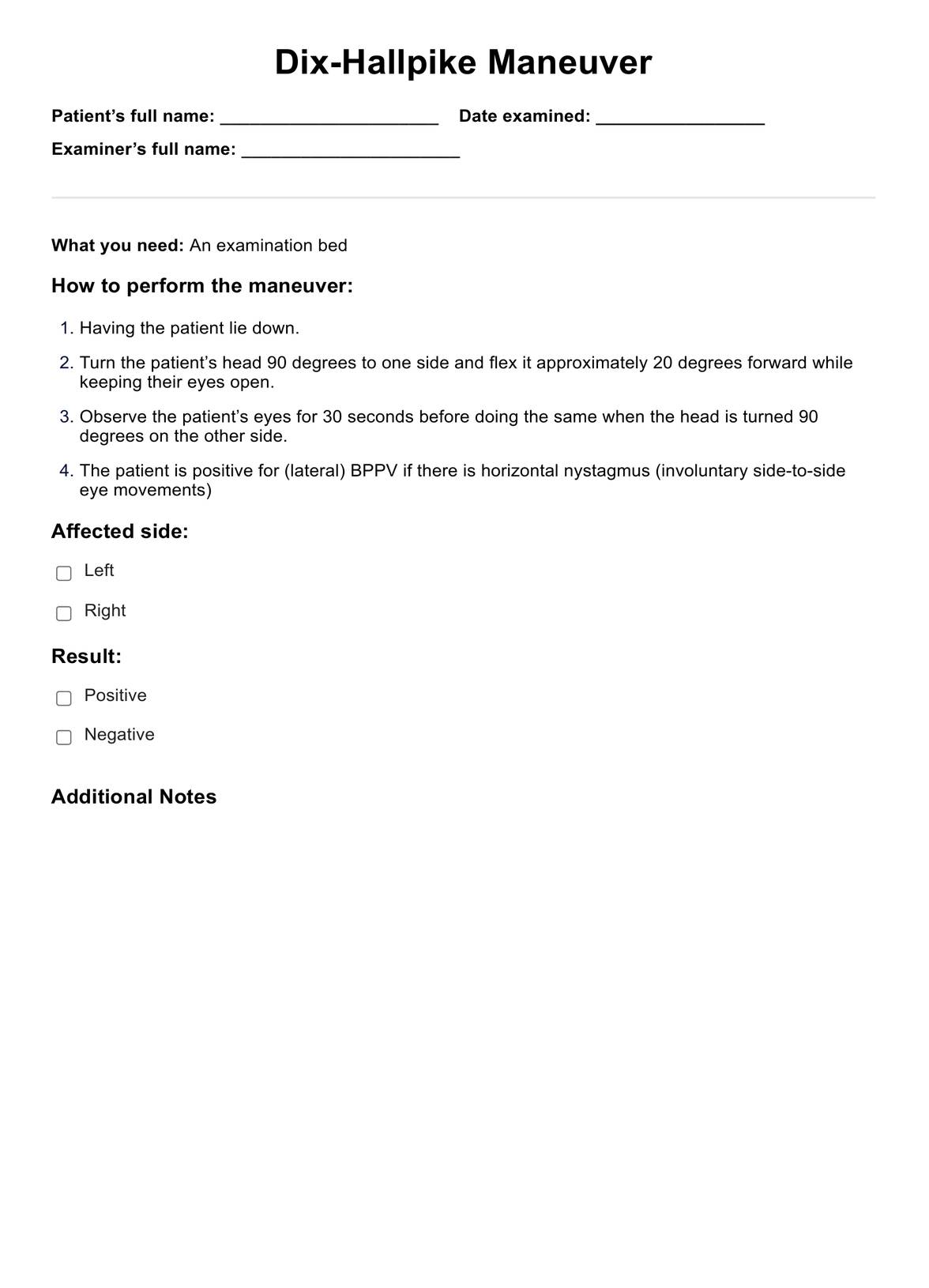Yes. This can be prevented by regularly performing the various maneuvers listed above.

BPPV Test
Explore differential BPPV Tests to diagnose benign paroxysmal positional vertigo. Download the free template here.
BPPV Test Template
Commonly asked questions
On its own? No. It’s benign and not life-threatening. What’s life-threatening is if a person loses their balance and falls, so even if BPPV is not life-threatening on its own, it should be taken seriously and addressed as soon as possible to avoid it from getting worse to the point that the person who has it is disoriented.
Having a physical therapist assist you isn’t required. If a patient knows the steps to perform the different maneuvers, they can do them by themselves in the comfort of their home.
EHR and practice management software
Get started for free
*No credit card required
Free
$0/usd
Unlimited clients
Telehealth
1GB of storage
Client portal text
Automated billing and online payments











